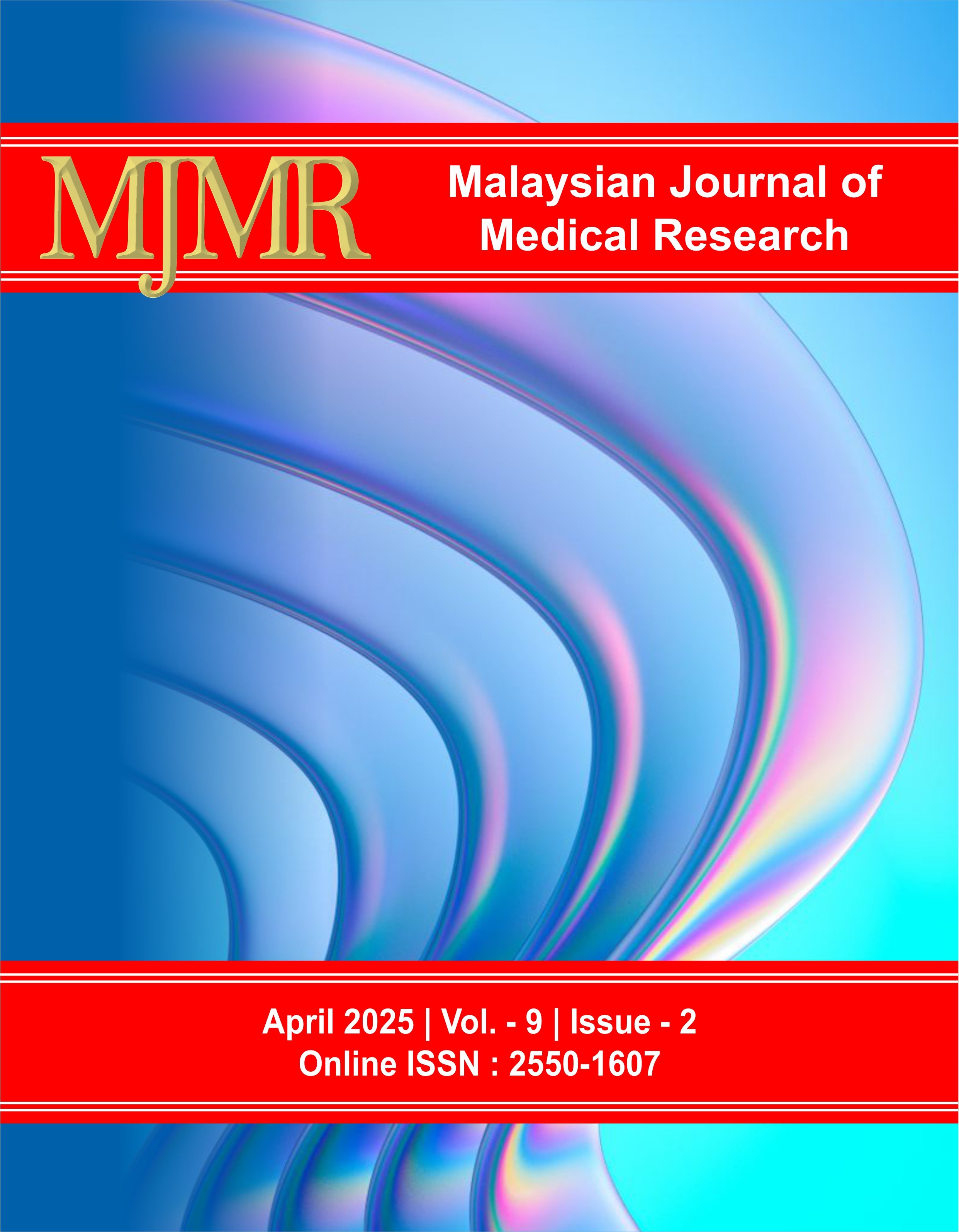Analysis of the Treatment Plan for Q-T Interval Prolongation Caused by Moxifloxacin in One Case
DOI:
https://doi.org/10.31674/mjmr.2025.v09i02.007Abstract
This case report presents the clinical treatment process of a 65-year-old female patient who experienced Q-T interval prolongation following the administration of moxifloxacin for a pulmonary infection. Upon hospital admission, the patient was initially treated with a combination of moxifloxacin and ceftazidime as part of an empirical anti-infective regimen. However, shortly after treatment commenced, the patient developed a skin rash accompanied by a significant prolongation of the Q-T interval as observed on the electrocardiogram (ECG), raising concerns about potential cardiac risks. In response, the clinical pharmacist conducted a timely medication review and recommended discontinuing both moxifloxacin and ceftazidime due to their possible adverse effects. Based on the pharmacist’s recommendation, the medical team revised the anti-infective regimen and substituted biapenem, a carbapenem antibiotic with a lower risk of cardiac side effects. Supportive symptomatic treatments were also provided to address the patient's condition holistically. As a result of these adjustments, the patient's rash gradually subsided, her Q-T interval normalised, and her overall symptoms significantly improved. She was eventually discharged in stable condition. This case highlights the potential cardiac risks associated with fluoroquinolone antibiotics like moxifloxacin, particularly in elderly patients who may be more susceptible to adverse drug reactions. Moreover, it underscores the essential role of clinical pharmacists in ensuring medication safety and optimising individualised treatment plans through active participation in multidisciplinary care teams.
Keywords:
Individualised Medication, Moxifloxacin, Pulmonary Infection, Q-T Interval ProlongationDownloads
References
Junping, G. U. O. (2019). Analysis of adverse reactions caused by intravenous infusion of moxifloxacin in 106 cases. Journal of Clinical Medicine in Practice, 23(21), 108-110. https://dx.doi.org/10.7619/jcmp.201921031
Khan, F., Ismail, M., Khan, Q., & Ali, Z. (2018). Moxifloxacin-induced QT interval prolongation and torsades de pointes: a narrative review. Expert Opinion on Drug Safety, 17(10), 1029-1039. https://doi.org/10.1080/14740338.2018.1520837
Ozbay, S., Ayan, M., Ozsoy, O., Akman, C., & Karcioglu, O. (2023). Diagnostic and prognostic roles of procalcitonin and other tools in community-acquired pneumonia: a narrative review. Diagnostics, 13(11), 1869. https://doi.org/10.3390/diagnostics13111869
Tulkens, P. M., Arvis, P., & Kruesmann, F. (2012). Moxifloxacin safety: an analysis of 14 years of clinical data. Drugs in R&D, 12, 71-100. https://doi.org/10.2165/11634300-000000000-00000
WU, D. L., CHEN, Z. G., DOU, W. Q., & CHEN, T. T. (2013). Analysis of 45 Cases of ADR Induced by Moxifloxacin. Chinese Journal of Pharmacovigilance, 10(1), 42. Retrieved from: https://zgywjj.magtechjournal.com/EN/abstract/abstract1575.shtml. Accessed on 10th August, 2024
Wu, X., Wu, J., Wang, P., Fang, X., Yu, Y., Tang, J., ... & Ren, J. (2020). Diagnosis and management of intraabdominal infection: guidelines by the Chinese society of surgical infection and intensive care and the Chinese college of gastrointestinal fistula surgeons. Clinical Infectious Diseases, 71(Supplement_4), S337-S362. https://doi.org/10.1093/cid/ciaa1513
Yiyu, W., Yahui, Z., Shasha, W., Zongli, Z., & Ningning, S. (2025). Elderly respiratory tract infection cases in a hospital in Xuzhou Area in 2020-2022. Journal of Public Health and Preventive Medicine, 36(1), 92-95. Retrieved from: http://wprim.whocc.org.cn/admin/article/articleDetail?WPRIMID=1068352&articleId=1106893. Accessed on 12th August, 2024.
药飞, & 王东晓. (2020). 临床药师在莫西沙星致 QT 间期延长不良事件中的实践. 中国药物应用与监测, 17(2), 96-99 [Yao Fei, & Wang Dongxiao. (2020). Clinical pharmacists' practice in the adverse events of QT interval prolongation caused by moxifloxacin. Chinese Journal of Drug Application and Monitoring, 17(2), 96-99].
周华, 李光辉, 陈佰义, 卓超, 曹彬, 杨毅, ... & 胡必杰. (2014). 中国产超广谱 β-内酰胺酶肠杆菌科细菌感染应对策略专家共识. 中华医学杂志, (24), 1847-1856 [Zhou Hua, Li Guanghui, Chen Baiyi, Zhuo Chao, Cao Bin, Yang Yi, ... & Hu Bijie. (2014). Expert consensus on strategies for coping with infections caused by extended-spectrum β-lactamase-producing Enterobacteriaceae in China. Chinese Medical Journal, (24), 1847-1856]. Retrieved from: https://mp.weixin.qq.com/s?__biz=MzI0NjUxMzkzMg==&mid=2247509735&idx=3&sn=5fac10b8c9f5a2b9d3c81c6a4a432b0a. Accessed on 10th August, 2024.
Published
How to Cite
Issue
Section
License
Copyright (c) 2025 Malaysian Journal of Medical Research (MJMR)

This work is licensed under a Creative Commons Attribution-NonCommercial-NoDerivatives 4.0 International License.























